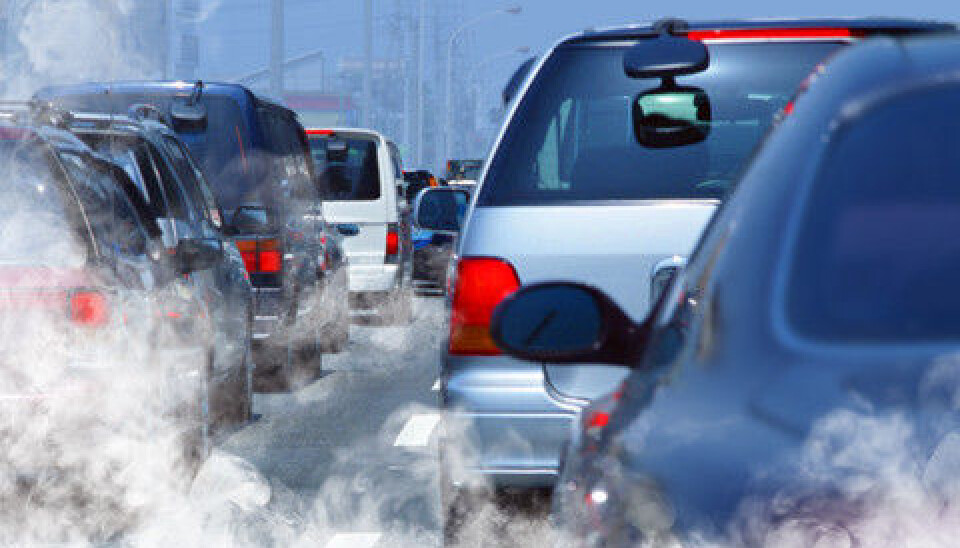This article was produced and financed by NILU - Norwegian Institute for Air Research

More harmful nitrogen dioxide in Norwegian cities
Calculations show that particulate emissions from vehicles have decreased, while emissions of harmful nitrogen dioxide in Norwegian cities have increased.
Denne artikkelen er over ti år gammel og kan inneholde utdatert informasjon.
The findings can be explained by two trends: Diesel engines have become much more efficient than in the past, and this has reduced CO2 emissions. In addition, the pollution control systems in modern diesel engines reduce particulate emissions, but unfortunately not nitrogen dioxide (NO2) emissions.
In fact, NO2 emissions, a component of nitrogen oxide (NOX), from new diesel cars have increased considerably since 2000.
Karl Idar Gjerstad, a researcher at the Norwegian Institute for Air Research says that the reason for this is twofold: "More efficient engines operate at higher combustion temperatures, which in turn results in higher emissions of NOX, while at the same time a significant proportion of this NOX reacts with oxygen in the particulate filter and forms NO2."
This development has occurred at the same time that Norway reduced taxes on diesel vehicles, which led to a significant increase in the proportion of diesel cars on the road.

In 2010, approximately 75% of all new passenger cars sold in Norway were diesel.
“Many will remember the winter of 2010/2011, when air pollution in Bergen and Oslo exceeded NO2 limits many times over,” says Gjerstad.
“The combination of an increased proportion of diesel cars, traffic congestion, a cold climate and temperature inversions led to this situation, which is likely to occur more frequently if the percentage of diesel powered vehicles continues to increase.”
One diesel bus versus 300 petrol powered cars
The diesel vehicle trend will also cause problems for pollution control measures for days when pollutions levels are high, such as banning car use on a day-to-day basis based on the vehicle registration date.
“If date-controlled driving bans are put into effect, it is important to ensure that the buses that are used to replace the cars do not pollute more than the cars that the buses are meant to replace. A diesel bus emits as much NO2 as four diesel cars, or the same as 300 petrol powered vehicles,” explains Gjerstad.
“It would be much more effective to ban diesel cars on heavily polluted days than to use date-controlled driving bans for all personal automobiles."
Actual emissions much higher than shown by tests
All cars must pass inspection before they can be driven in Norwegian traffic. To pass, drivers must be able to document that their vehicles’ NOX emissions are lower than the permissible limit. Cars are generally tested using an approved kind of assessment.
The question is whether this test reflects real Norwegian conditions.
In a study performed by The Institute of Transport Economics (TØI) and NILU, it turned out that diesel cars actually emit much more NOX under real driving conditions, such as urban situations and traffic jams during winter, than during an approved emissions test.
The report presented calculations showing how emissions from road traffic in the greater Oslo area can be expected to develop until 2025. NILU made the calculations based on updated emission factors from TØI. These factors took into account actual measurements of emissions from different vehicle classes.
Under real conditions, a diesel vehicle releases 6-8 times more NOX than it is approved to release.
The same type of discrepancy is not found in gasoline powered cars.

































